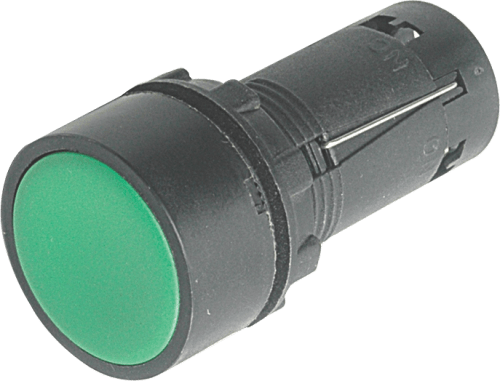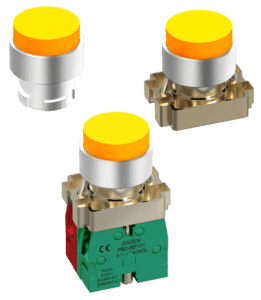Push Button Switches
Reliable Push Button Switches for Every Need
Discover industry-leading push button switches designed for precision, durability, and safety. Whether you’re searching for compact designs or rugged performance solutions, ESSEN Deinki offers the perfect fit.
Designed With Innovation and Reliability
PB7 Series Push Button Switches
The PB7 Series is your go-to solution for versatile, industrial-grade push button switches. These modular switches deliver unmatched performance, even in challenging environments.
Key features:
- Modular Design: Customizable to meet specific needs.
- Shock and Vibration Resistant: Built to handle demanding industrial settings.
- Compact Size: Ideal for space-limited applications.
- Safety First: Equipped with finger protection for safe operation.
- Customizable Colors: Available in White, Black, Green, Red, Yellow, and Blue to match your setup.
- Global Standards Compliance: Conforms to IEC/EN-60947-5-1, ensuring quality and reliability.
Great for control panels, signaling stations, and machinery, the PB7 Series makes precision and durability its top priority.

Spring return
(Circular head flush)
Ordering code
PB7 11A ( )
PB7 11B ( )
PB7 11 C ( )
Type of Contact
NO
NO
C/O

Push & push to release
(Circular head flush)
Ordering code
PB7 21A ( )
PB7 21B ( )
PB7 21 C ( )
Type of Contact
NO
NO
C/O
PB2 Series Push Button Switches
Looking for a sleek and compact design? The PB2 Series combines elegance and reliability, making it the preferred choice for compact control panels.
Key features:
- Aesthetic Design: Matches industrial and commercial environments effortlessly.
- Trouble-Free Performance: Self-wiping contacts extend the switch’s lifespan.
- Vibration Resistant: Ensures consistent operation in challenging conditions.
- High Safety Standards: Shrouded terminals provide protection against electrical shocks.
- Modular Build: Simplifies installation and upgrades.
- Global Standards Compliance: Built to IEC/EN-60947-5-1 specifications for performance you can trust.

Type
B
C
Description
Ordering code
- PB2-BA( )
- PCB2-BA( )
- PCB2-BA( )*

Type
B
C
Description
Actuator
Actuator & metal bracket
Actuator, metal bracket & contact block
Ordering code
- PB2-BL( )
- PCB2-BL( )
- PCB2-BL( )*
Built to Last, Designed for Precision
Explore the unmatched quality of ESSEN Deinki push button switches. Find the perfect solution for your project today.
Frequently Asked Questions
Our switches are perfect for industries like manufacturing, automation, commercial electronics, and more. They are designed for versatile applications, from control panels to emergency stop systems.
Yes! Thanks to their modular design, both series are quick and straightforward to install, making them ideal for industrial and commercial use.
Absolutely. All ESSEN Deinki push button switches conform to IEC/EN-60947-5-1 standards, ensuring the highest levels of safety and reliability.

